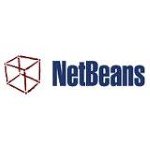Netbeans IDE Tutorials
In this detailed Resource page, we feature an abundance of Netbeans IDE Tutorials!
NetBeans is an integrated development environment (IDE) for Java. NetBeans allows applications to be developed from a set of modular software components called modules. NetBeans runs on Windows, macOS, Linux and Solaris. In addition to Java development, it has extensions for other languages like PHP, C, C++, HTML5,[4] and JavaScript. Applications based on NetBeans, including the NetBeans IDE, can be extended by third party developers.
NetBeans platform
The NetBeans Platform is a framework for simplifying the development of Java Swing desktop applications. The NetBeans IDE bundle for Java SE contains what is needed to start developing NetBeans plugins and NetBeans Platform based applications; no additional SDK is required.
Applications can install modules dynamically. Any application can include the Update Center module to allow users of the application to download digitally signed upgrades and new features directly into the running application. Reinstalling an upgrade or a new release does not force users to download the entire application again.
The platform offers reusable services common to desktop applications, allowing developers to focus on the logic specific to their application. Among the features of the platform are:
- User interface management (e.g. menus and toolbars)
- User settings management
- Storage management (saving and loading any kind of data)
- Window management
- Wizard framework (supports step-by-step dialogs)
- NetBeans Visual Library
- Integrated development tools
NetBeans IDE
NetBeans IDE is an open-source integrated development environment. NetBeans IDE supports development of all Java application types (Java SE (including JavaFX), Java ME, web, EJB and mobile applications) out of the box. Among other features are an Ant-based project system, Maven support, refactorings, version control (supporting CVS, Subversion, Git, Mercurial and Clearcase).
Modularity
All the functions of the IDE are provided by modules. Each module provides a well-defined function, such as support for the Java language, editing, or support for the CVS versioning system, and SVN. NetBeans contains all the modules needed for Java development in a single download, allowing the user to start working immediately. Modules also allow NetBeans to be extended. New features, such as support for other programming languages, can be added by installing additional modules. For instance, Sun Studio, Sun Java Studio Enterprise, and Sun Java Studio Creator from Sun Microsystems are all based on the NetBeans IDE.
If you wish to build up your Netbeans IDE knowledge first, check out our NetBeans IDE Tutorial.
Netbeans IDE Tutorials – Getting Started
Simple examples based on Netbeans IDE
- NetBeans IDE 8.0 and new features for Java 8
NetBeans IDE 8.0 is released, also providing new features for Java 8 technologies. It has code analyzers and editors for working with Java SE 8, Java SE Embedded 8, and Java ME Embedded 8. - Released: NetBeans IDE 8.1 Beta
NetBeans IDE 8.1 Beta has been released. NetBeans IDE has a track record, built up over 15 years, of delivering complete and comprehensive tools for Java developers. - How to Install NetBeans IDE 8.0 in Ubuntu
In this example we shall show you how to install NetBeans IDE 8.0 which was finally released on March 18, 2014, it provides out-of-the-box code analyzers and editors for working with the latest Java 8 technologies. - JBoss WildFly NetBeans Example
In this example we will download and install theJBossWildFlyapplication server. We will integrate it with NetBeans so that we can manage it from NetBeans. - JDBC HSQLDB Tutorial
In this tutorial we will reviewHSQLDBbasics. Then we will write a simpleJavaapplication to demonstrate how to access and interact with anHSQLDBdatabaseusingJDBC. - JDBC Driver Types Example
In this example we will review different JDBC Driver Types. We will write a simple Java application to demonstrate how to use JDBC connectivity steps to access an SQLite database. - JSF Application NetBeans Example
In this example we will demonstrate how to create a JSF Application in NetBeans. Our application will display a simple form to the user asking to enter their name. - Netbeans Vaadin Example
In this example we are going to see how to download and install Netbeans, install the plugin, create a Vaadin project and run it on Tomcat. - JUnit NetBeans Example
In this post I will introduce the basics of writing and running JUnit unit tests in NetBeans IDE. - Gradle NetBeans Example
In this example, we will explain how to integrate Gradle with NetBeans IDE and how to perform basic Gradle tasks. - java.library.path – What is it and how to use
In this tutorial we will discuss about java.library.path, its definition and how can be used by Java applications.
[undereg]

